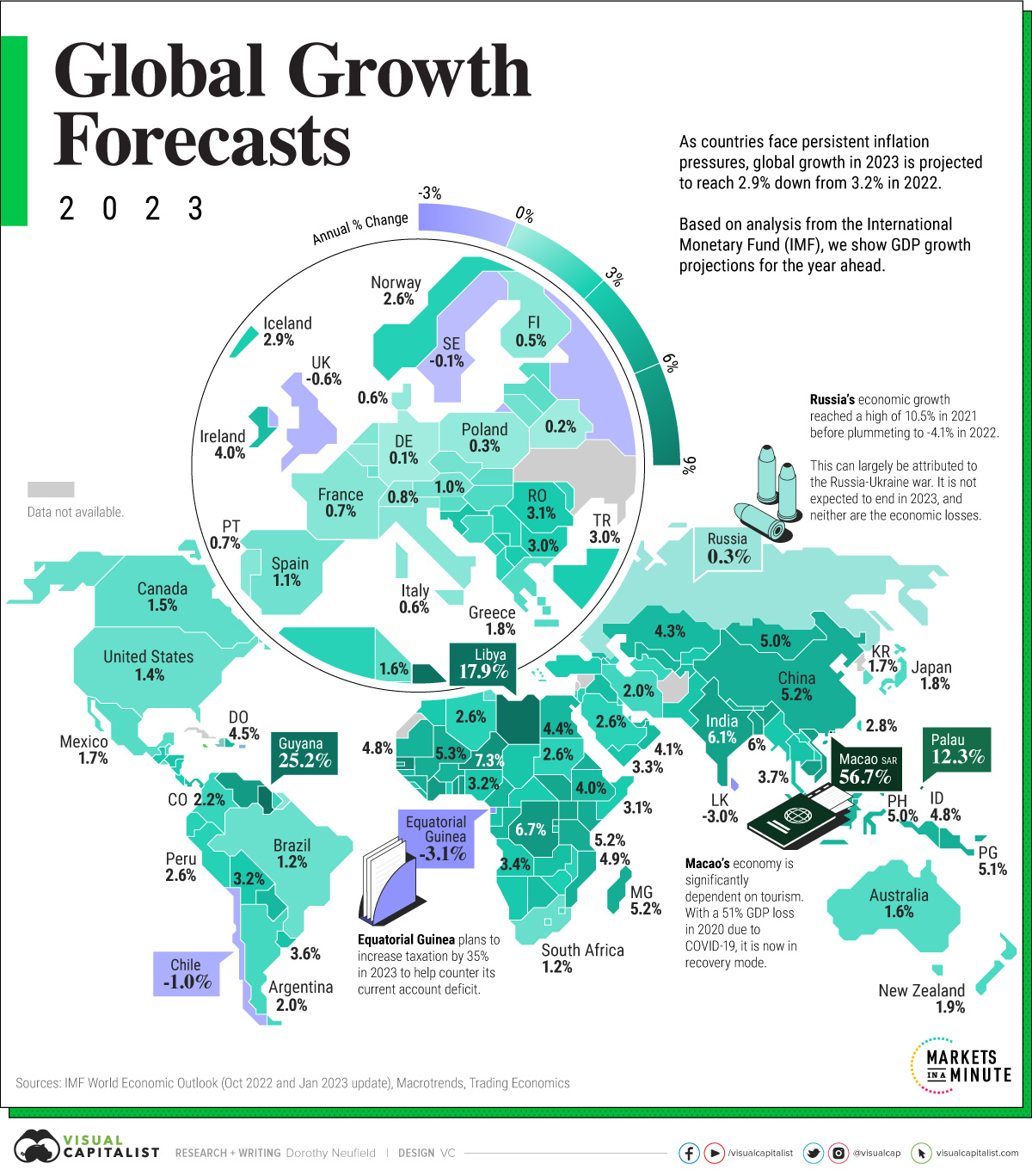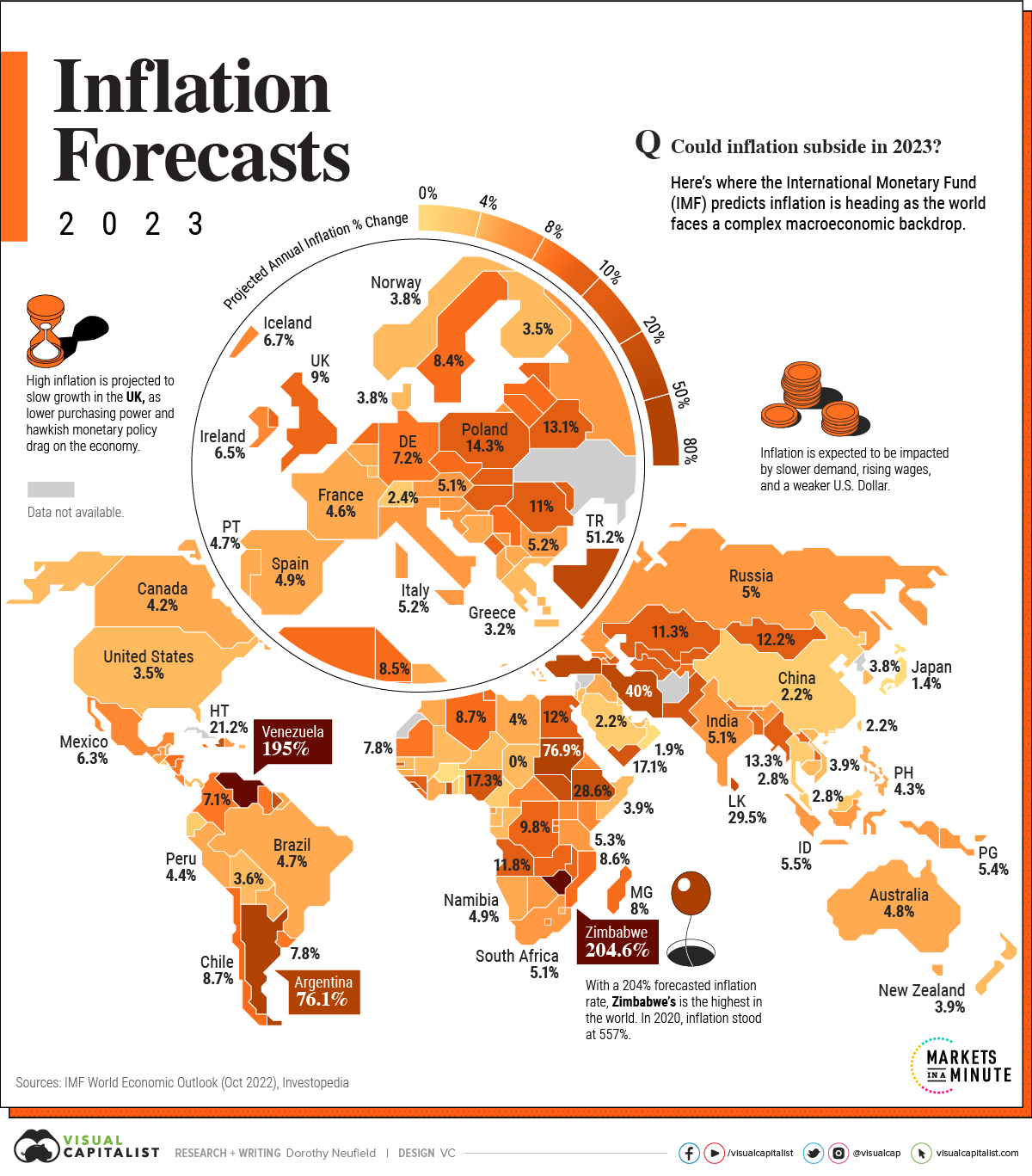Polish Institute of Economics forecasts for 2023 (GDP, Inflation, Labor market)

! ► The Polish economy is expected to face a short-term recession.
! ► Inflation in 2023 is expected to average 13%. Inflation is expected to remain in double digits until March 2023 and then decrease to around 7.8% by the end of the year.
! ► Prices of industrial goods and services are expected to continue to increase due to companies adjusting their price lists in response to changing energy costs and high wage demands.
! ► The labor market is expected to remain stable with an unemployment rate of 5.5-6%.
GDP forecast
According to analysts, the Polish economy significantly slowed down in the first three quarters of 2022. The growth of GDP slowed down from 8.5% in the first quarter to 3.6% in the third quarter, but this is not the end of the downward trend. Current data shows a miserable growth in consumer expenditure and investment. In addition, GDP growth is still based on inventories.
The Polish Institute of Economics expects that GDP will increase by 1.2% in 2023, but the quarterly results will be highly variable. The beginning of the year will see a recession, with GDP declining by 0.3 percent. Economic slowdown also means weak growth in private consumption. The Polish Institute of Economics expects that activity will increase in the second half of the year due to an improvement in the economic situation in the Eurozone. The forecasted growth is 1.3% in the third quarter and 2.5% in the fourth quarter of next year.

Source: https://www.visualcapitalist.com/mapped-gdp-growth-forecasts-by-country-in-2023/
Inflation forecast
CPI inflation in 2023 will average 13%, compared to 14.5% in 2022. According to analysts, the peak of inflation will occur in February - CPI will then exceed 20%. This is the result of the restoration of standard VAT rates on electricity, fuel and natural gas. From March, inflation will begin to fall steadily, but it will still slightly exceed 8% by the end of the year. In 2024, prices will increase on average by 6.4%.
The largest part of inflation in 2023 will be core inflation. The Polish Institute of Economics expects that price growth will slowdown slowly. At the beginning of the year, core inflation should oscillate around 11.5 percent. Double-digit results will continue until March, and at the end of 2023 the rate will be around 7.8 percent. Inflationary pressure is now quite widespread. Nearly 70 percent of prices will rise at a rate of more than 10 percent this year.


Source: https://www.visualcapitalist.com/mapped-2023-inflation-forecasts-by-country/
Importantly, according to analysts, the economic slowdown has little impact on the pricing decisions of companies, which are gradually adjusting their price lists in line with changing energy costs. Therefore, industrial goods price increases are still ahead. Moreover, a record percentage of companies are declaring wage demands - such a state is likely to continue in the coming months. Its consequence will be a rapid increase in service prices.
The Polish Institute of Economics expects food price increases to slow down in 2023. We will see a gradual slowdown from 22 percent at the beginning of the year to around 6 percent by the end of the year. Stabilization applies to most goods sold. Prices of products that became more expensive after the Russian aggression are returning to normal. However, further changes in world prices will depend on the development of the conflict in Ukraine.
Labor market
According to experts, the labor market situation will not change significantly. It will remain in the range of 5.5-6 percent unemployment rate.
LT
! ► Tikimasi, kad Lenkijos ekonomika patirs trumpalaikį nuosmukį.
! ► Numatoma, kad 2023 m. infliacija bus vidutiniškai 13%. Tikimasi, kad iki 2023 m. kovo mėn. infliacija išliks dviženklė, o paskui iki metų pabaigos sumažės iki maždaug 7,8%.
! ► Numatoma, kad pramonės prekių ir paslaugų kainos ir toliau didės dėl to, kad įmonės, reaguodamos į kintančias energijos sąnaudas ir aukštus darbo užmokesčio reikalavimus, koreguos savo kainoraščius.
! ► Tikimasi, kad darbo rinka išliks stabili ir nedarbo lygis bus 5,5-6%.
BVP prognozė
Analitikų teigimu, per pirmuosius tris 2022 m. ketvirčius Lenkijos ekonomika gerokai sulėtėjo. BVP augimas sulėtėjo nuo 8,5 % pirmąjį ketvirtį iki 3,6 % trečiąjį ketvirtį, tačiau tai nėra mažėjimo tendencijos pabaiga. Dabartiniai duomenys rodo apgailėtiną vartojimo išlaidų ir investicijų augimą. Be to, BVP augimas vis dar grindžiamas atsargomis.
Lenkijos ekonomikos institutas prognozuoja, kad 2023 m. BVP padidės 1,2 %, tačiau ketvirčio rezultatai bus labai nepastovūs. Metų pradžioje bus stebimas nuosmukis, o BVP sumažės 0,3 proc. Ekonomikos lėtėjimas reiškia ir silpną privataus vartojimo augimą. Lenkijos ekonomikos institutas tikisi, kad antrąjį pusmetį aktyvumas padidės dėl pagerėjusios ekonominės padėties euro zonoje. Prognozuojamas 1,3 proc. augimas trečiąjį ketvirtį ir 2,5 proc. ketvirtąjį kitų metų ketvirtį.
Infliacijos prognozė
VKI (vidutinė metinė infliacija) 2023 m. bus vidutiniškai 13 %, o 2022 m. - 14,5 %. Pasak analitikų, infliacijos pikas bus vasario mėnesį - tada VKI viršys 20 %. Tai lemia standartinių PVM tarifų elektros energijai, degalams ir gamtinėms dujoms atkūrimas. Nuo kovo mėn. infliacija pradės nuosekliai mažėti, tačiau iki metų pabaigos ji vis tiek šiek tiek viršys 8 %. 2024 m. kainos vidutiniškai padidės 6,4 %.
Didžiausią infliacijos dalį 2023 m. sudarys bazinė infliacija. Lenkijos ekonomikos institutas tikisi, kad kainų augimas lėtai mažės. Metų pradžioje bazinė infliacija turėtų svyruoti apie 11,5 proc. Dviženkliai rezultatai išsilaikys iki kovo mėnesio, o 2023 m. pabaigoje šis rodiklis bus apie 7,8 proc. Infliacinis spaudimas šiuo metu yra gana plačiai paplitęs. Beveik 70 proc. kainų šiemet kils daugiau kaip 10 proc.
Svarbu tai, kad, pasak analitikų, ekonomikos sulėtėjimas nedaro didelės įtakos įmonių kainodaros sprendimams, kurios palaipsniui koreguoja savo kainoraščius, atsižvelgdamos į kintančias energijos sąnaudas. Todėl pramoninių prekių kainų didėjimas vis dar laukia ateityje. Be to, rekordinis procentas įmonių deklaruoja darbo užmokesčio reikalavimus - tokia būsena, tikėtina, išliks ir artimiausiais mėnesiais. Jos pasekmė bus spartus paslaugų kainų didėjimas.
Lenkijos ekonomikos institutas tikisi, kad 2023 m. maisto produktų kainų augimas sulėtės. Matysime laipsnišką lėtėjimą nuo 22 proc. metų pradžioje iki maždaug 6 proc. metų pabaigoje. Stabilizacija taikoma daugumai parduodamų prekių. Produktų, kurie pabrango po Rusijos agresijos, kainos grįžta į įprastas vėžes. Tačiau tolesni pasaulinių kainų pokyčiai priklausys nuo konflikto Ukrainoje raidos.
Darbo rinka
Ekspertų nuomone, padėtis darbo rinkoje iš esmės nesikeis. Nedarbo lygis išliks 5,5-6 proc. ribose.
